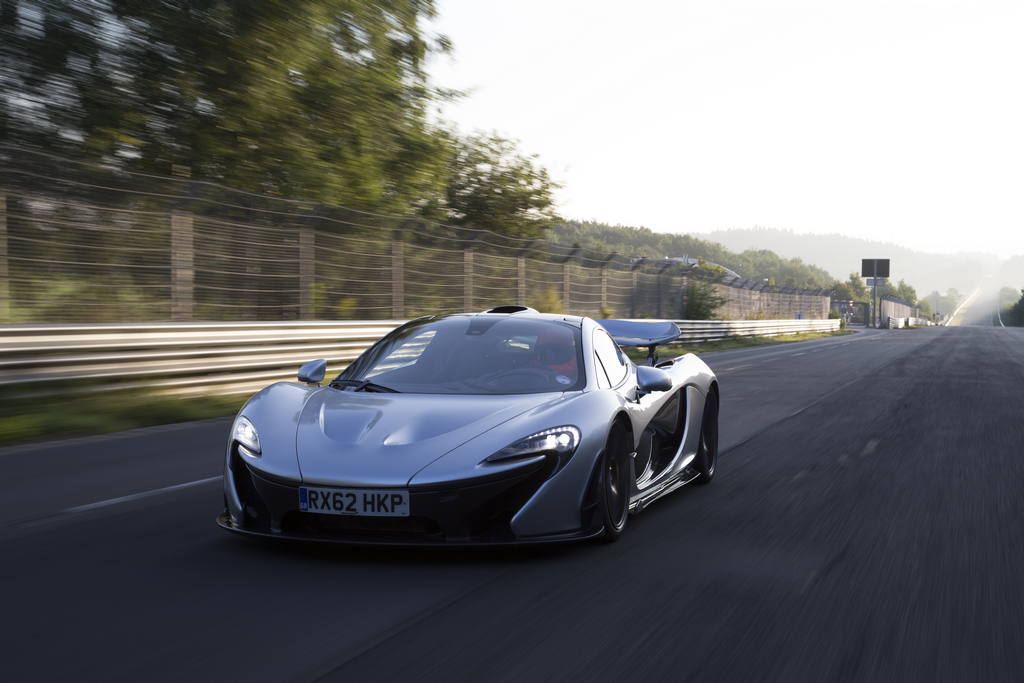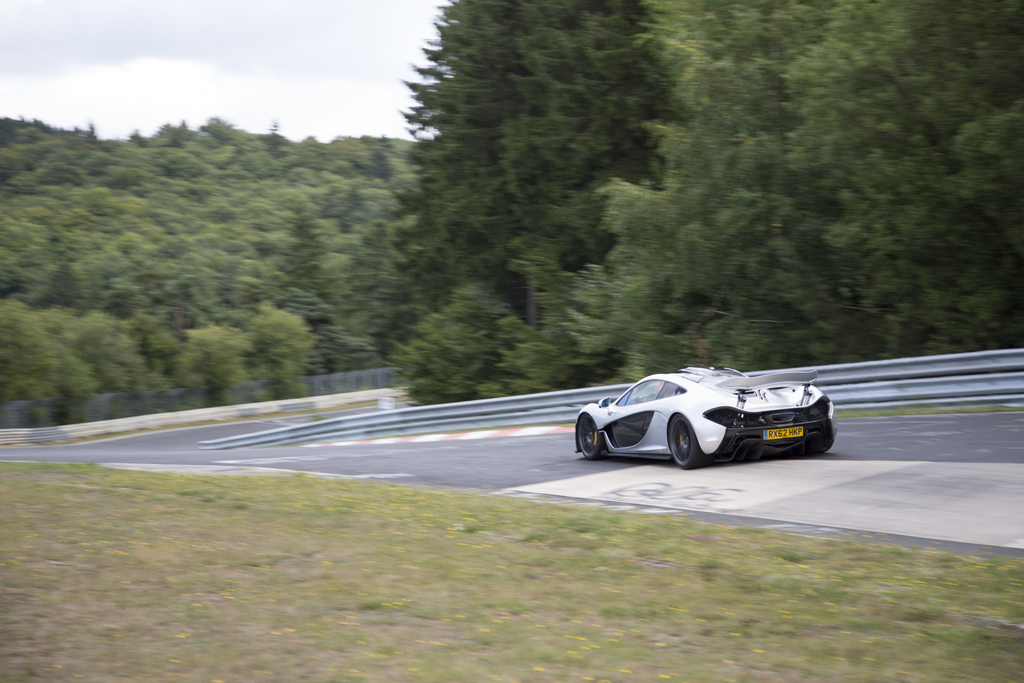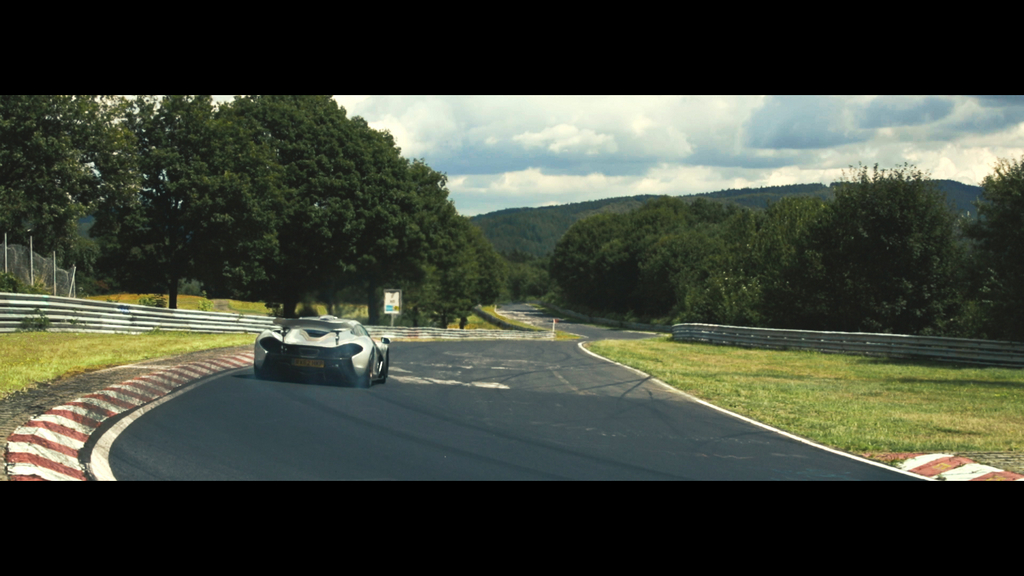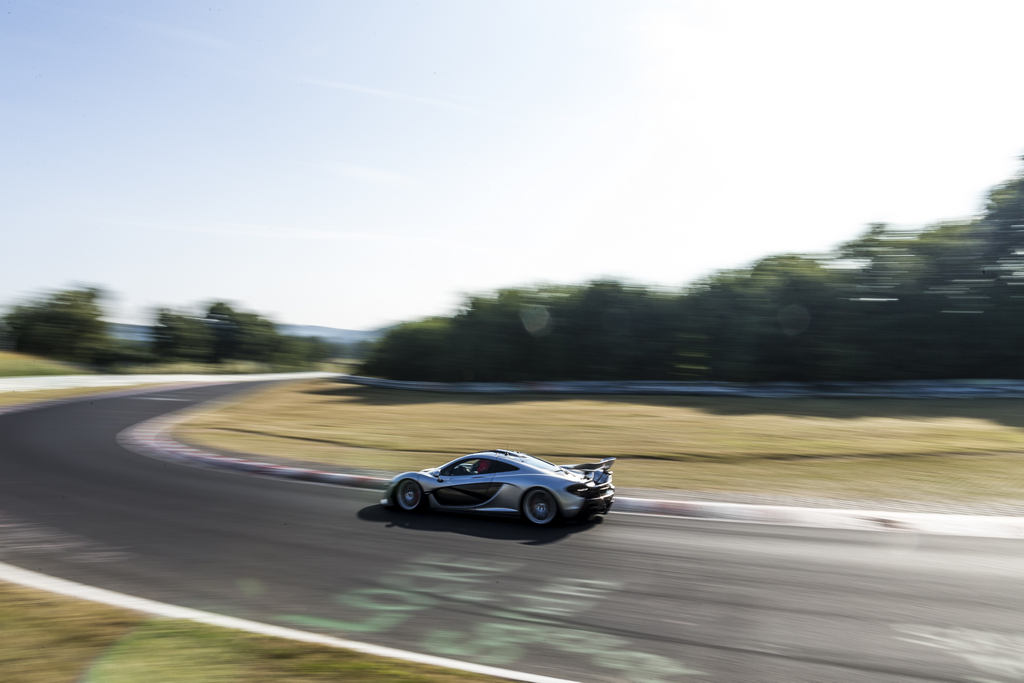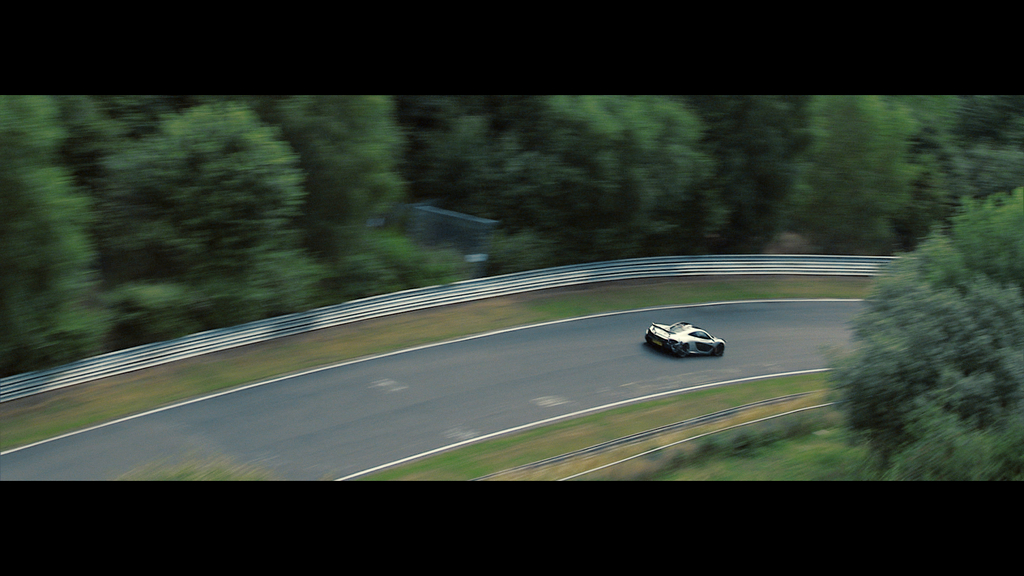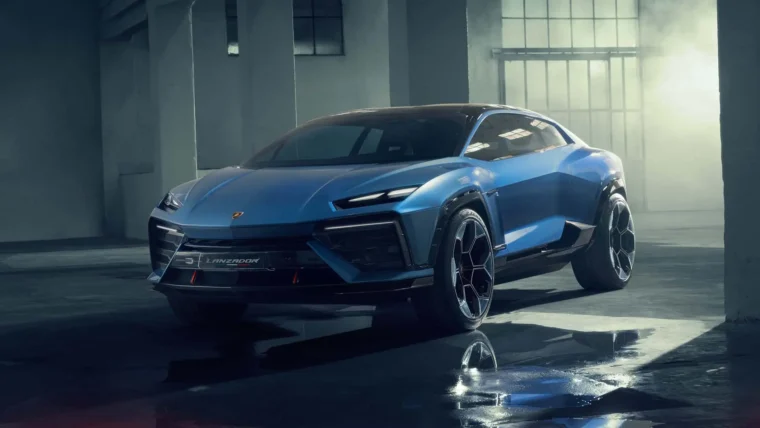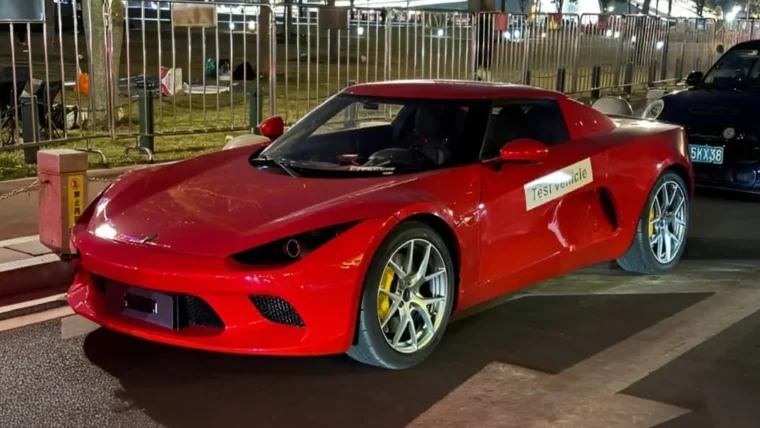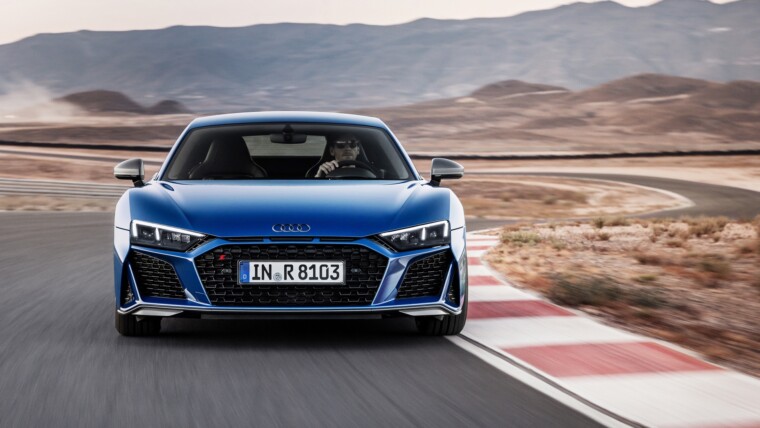McLaren last week released a video of their P1 super car belching through the tracks of the Nurburgring, making a very bold statement where not many street legal super cars have ventured into, that is the claim of having able to lap the green hell in less than 7 minutes.
The McLaren name was born on the racetrack and, 50 years on, is the most successful name in global motorsport. That desire and determination to push for every extra tenth of a second, and obsessive focus on perfection, has seen the final development objective for the now sold out McLaren P1™ achieved: a sub-seven minute lap time of the Nürburgring circuit.
From the outset, the McLaren P1™ has been developed with one clear goal: to be the best driver’s car on both road and track. To achieve this, the development programme has focussed on ensuring the McLaren P1™ pushes the boundaries in terms of sheer performance, with testing carried out in some of the harshest conditions around the world. But one challenge remained, and that was arguably the toughest of them all.
20.8 kilometres driven at an average speed in excess of 178 km/h. Sounds easy, until you add in more than 150 corners, 300 metres of elevation changes and cornering forces of up to 2g. All in less than seven minutes…
Commenting on the sub-seven achievement by the McLaren P1™, McLaren Formula 1™ driver and 2009 world champion Jenson Button said: ‘The fact that the McLaren P1™ has posted a sub-seven-minute lap at the Nürburgring is unbelievably impressive.
‘I’ve been an F1 driver for 14 years, and I’ve driven more than 240 Grands Prix and, although I’ve never raced an F1 car on the Nürburgring-Nordschleife circuit, because the last time the German Grand Prix was held there was before I was born, I know exactly how challenging, and daunting, a racetrack it is.
‘Over the past dozen-or-so years I’ve owned a lot of ultra-high-performance road cars. I’ve driven the McLaren P1™ on a number of occasions – including up the hill at the Goodwood Festival of Speed, where it was sensational – and I think it’s a truly superb machine: unbelievably refined yet unbelievably quick.
‘But, as I say, for it to have recorded a sub-seven minute lap time around the Nürburgring is the icing on the cake: proof positive, backed by hard data, on the greatest racetrack of them all, that McLaren has created a genuine game-changer.’
The challenge: an average in excess of 178 km/h over 20.8 km
The Nürburgring-Nordschleife is the toughest test track to measure the all-round performance of any car. And among the McLaren P1™’s performance targets, which included accelerating to 300kph (186mph) in less than 17 seconds onto a limited top speed of 350kph (217mph), was to achieve a sub-seven minute time around the German circuit.
No mean feat for a stripped out, track-focussed racing car, let alone a production car on standard road tyres, that offers superior levels of ride comfort and all round ability on road.
Sub-seven minutes – that calculates as an average speed of at least 178 km/h (111 mph) around the 20.8 kilometre (13 miles) circuit. And not just any circuit. One that includes some of the longest straights, tightest bends, steepest inclines, and more changes in road surface than any other circuit.
Location: the fearsome Nürburgring-Nordschleife
The Nürburgring, or the Nürburgring-Nordschleife to give it its full name, is one of the most fearsome circuits in the world. The 20.8 kilometre ribbon of tarmac through Germany’s Eifel Forest was a date on the Formula 1™ calendar up until 1976, when it was dropped from the championship on safety grounds after the crash that nearly cost Niki Lauda his life. That race, as depicted in the recent Hollywood blockbuster Rush, saw James Hunt claim pole position and overall race victory for McLaren, on his way to becoming world champion. The stage was set 37 years ago – McLaren: P1 at the Nürburgring.
A challenging mixture of off-camber corners and tight, technical sections finished with the 3.5 kilometre long Döttinger Höhe straight means a compromise between high downforce for optimised cornering and low drag for improved top speed for the ultimate lap.
Every lap, with its 154 corners and dramatic elevation and direction changes, is the ultimate challenge to both car and driver, and demands an optimised set up and full commitment and concentration. This is the place dubbed the ‘Green Hell’ by three-time Formula 1™ world champion Jackie Stewart, and the list of accidents and casualties is almost as long as the track itself – when it bites, it bites hard.
The lap: a driver’s eye view of sub seven minutes
The Supernova Silver example of the McLaren P1™, codenamed XP2R, was driven the 390 miles from Woking, England across to the Nürburgring ahead of this final development test phase, underlining the car’s unique road-to-race ability. On arrival at the track, ‘Race’ mode extended the active rear wing by 300mm, dropped the ride height by 50mm and saw the RaceActive Chassis Control suspension system stiffen by 300 percent – a fully-focussed track car at the push of a button.
The McLaren P1™ generates up to 600kgs of downforce through the use of advanced active aerodynamics which, in conjunction with the bespoke tyres, provides unprecedented levels of grip and superior balance and handling. This allows the McLaren P1™ to carry greater levels of speed through the corners, and achieve higher apex speeds, and the optimised traction enables the driver to get on the power earlier.
‘The track is like the rollercoaster from hell. However, the car feels balanced and poised throughout, and inspires you to push on with the levels of grip and all-round ability,’explains Goodwin.
‘The acceleration from the Aremberg right hander down the Fuchsröhre is absolutely amazing. I have only experienced acceleration like this before in a Formula 1 car. This downhill snaking section of the track is taken flat, using DRS, shifting gear all the way down to the base of the valley, and the compression that follows applies the maximum vertical g-forces to the car. The forces really load the tyres, chassis and wing, but it is taken with only a slight lift of the throttle.’
‘The numerous jumps that make the Nordschleife famous are an even bigger challenge than normal with the massive speeds we approach them. Flugplatz and Pflanzgarten are both taken at very high speed, but the levels of downforce generated combats these approach speeds, and keep the car really stable on ‘landing’. They are both quite scary corners in any car, but I’ve never felt as confident. It’s just sensational.
‘Through Bergwerk [the corner at which Niki Lauda had his infamous accident in the 1976 German GP], you have to turn in late in order to carry as much speed as you can onto the following straight without running wide. Here, the awesome braking and pin-sharp steering of the McLaren P1™ were crucial, enabling me to get back on the throttle smoothly and quickly. That is a quick section, and one that feels fantastic when you get it just right.’
Immediately back on the pace on the exit of Bergwerk, the groundbreaking RaceActive Chassis Control (RCC) ensures the McLaren P1™ remains planted and balanced through a particularly bumpy section of track. Goodwin continues: ‘With a car this fast, stability is just as important as ultimate grip, and some of the bumpiest sections of the track are also the fastest. The relentless climb towards the Karussell is dealt with in a few spectacular moments as the full combined power of the powertrain punches the car up this long incline. At the top of the hill is one of the fastest corners on the lap, with a approach speed around 300 km/h, The track is really bumpy here, but the corner is dispatched with a light dab of the brakes in fifth gear.’
Cornering forces peak as the McLaren P1™ drops onto the banked concrete surface at the Karussell, and swings round more than 180 degrees. In terms of pure lateral g-forces, the driver is subjected to 3.9g.
From here, the McLaren P1™ enters the final stages of the lap, and the sprint to the finish. Running on road-legal Pirelli tyres specially developed for the McLaren P1™, the production-specification model set a relentless pace, peaking at the electronically limited 330 km/h (205 mph) available in ‘Race’ mode on the Döttinger Höhe straight.
Throughout the course of a single lap, a gear change was made, on average, every six seconds and, unlike in Formula 1™ when DRS is limited to one or maybe two designated zones to aid overtaking, the system was used for nine percent of the entire lap on seven separate occasions as Goodwin made his way towards the finish line. The system is operated through the steering wheel-mounted button, and trims the twin element rear wing from 29° to 0°. When engaged, the use of DRS reduces downforce on the car by 60 percent.
‘The Döttinger Höhe straight disappears in no time,’ explains Goodwin. ‘From Galgenkopf the acceleration is brutal, but when you press the DRS button, it ramps up even further as the car slips through the air, and you arrive at the limited top speed of 330 kph in no time. And then, the car just sits there – ‘cruising’ – at this surreal speed, with the rough tarmac and Eifel mountain scenery flying by as if it’s a movie on fast forward.’
Having driven the full range of McLaren road and race cars, Goodwin is in a unique position to comment on the performance characteristics and abilities, and how the McLaren P1™ compares. Following his sub-420 second sprint around the fearsome Nürburgring circuit, he concludes: ‘Driving the McLaren P1™ at this pace, on this circuit, is the most impressive driving experience I’ve ever had in any road or race McLaren, on any road or track in the world.’
The result: worthy of the McLaren badge
For the team at McLaren, good is simply not good enough. This mentality has seen the McLaren name on the top step of the podiums in Formula 1™, Indianapolis 500, Can Am and at the 24 Hours of Le Mans – an achievement no other team can lay claim to. In Formula 1 alone, the team has won a quarter of all Grands Prix ever held, claiming 155 pole positions and 182 victories.
This list of achievements highlights the team’s desire to succeed, and the constant push for improvement. This mentality resonates through the entire McLaren Group, and achieving the sub-seven minute target time was just another objective on the list that the team within Automotive were determined to beat.
Goodwin concludes: ‘The sub-seven minute lap time of the Nürburgring was set as part of a list of targets the McLaren P1™ had to meet and, as with other objectives within the programme, the team has more than achieved what we set out to do. It is a fitting tribute to the company in its 50th year, and to Bruce, the founder, whose ideals we live every day.’
The car
The groundbreaking McLaren P1™ is equipped with a dual powerplant drivetrain generating 916PS (903 bhp). A highly efficient 3.8-litre twin turbo V8 petrol engine produces 737PS (727 bhp) which is coupled to a 179PS (176 bhp) lightweight electric motor to offer optimised performance. The efficient drivetrain offers instant torque and throttle response, with performance figures to match – 0-100 km/h (62 mph) in 2.8 seconds, 0-200 km/h (124 mph) in 6.8 seconds and 0-300 km/h (186 mph) in 16.5 seconds.
The combination of optimised aerodynamics, cutting-edge bespoke systems developed with technical partners and never-before-used technologies, have ensured the McLaren P1™ has achieved, and in many cases exceeded, all objectives during development. It is the culmination of five decades of race-winning knowledge and expertise which has been transferred to the track with the motivating factors that have driven the McLaren name to be one of the most successful in motorsport – belief and a desire to achieve.
Mike Flewitt, Chief Executive Officer of McLaren Automotive explained: ‘This final challenge for the McLaren P1™ was very publicly set out earlier this year, and the result is true testament to the team in Woking. Not only in terms of what has been achieved in Germany, but in what has been achieved with this project. The McLaren P1™ is a technical tour de force, and is truly a car that we at McLaren are very proud of. The desire to push the envelope of performance, and achieve the sub-seven minute lap time, shows the spirit of Bruce McLaren lives in the company 50 years on.’
‘The Nürburgring is one of the most daunting and challenging stretches of road anywhere in the world, and is the perfect final test for the McLaren P1™, as it brings together all of the elements of the development programme we have worked through, and subjects the systems and technologies to the ultimate seven minute punishment.
‘We set a series of challenging targets throughout the development of the McLaren P1™, with the most significant one being the fact that the car would be the best driver’s car on both road and track. I am extremely proud of the fact that we have achieved everything we originally set out to do, and in such a convincing manner.’
A sub-seven minute lap time of the Nürburgring-Nordschleife was the final objective in the development programme for the most technologically advanced car ever produced in the UK. This latest achievement for the team at McLaren was made possible through close collaboration with world-leading Partners, providing specialist expertise and technical support throughout the duration of the project.
A unique and highly efficient braking system from Akebono, providing stopping ability akin to a fully-focused racing car; a specially-formulated lightweight paint system by AkzoNobel offering optimised performance and aerodynamics; advanced performance and cooling characteristics of Mobil 1 lubricants in the engine and gearbox; bespoke high performance tyres created by Pirelli designed and developed specifically to manage the unprecedented downforce and cornering forces generated; and the use of highly accurate TAG Heuer timing technology and equipment for the continual verification of performance characteristics during the development programme.
Other posts by AF Newsdesk

